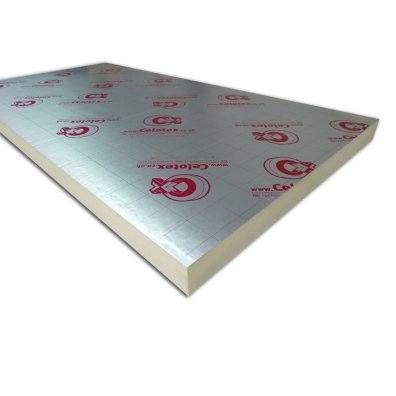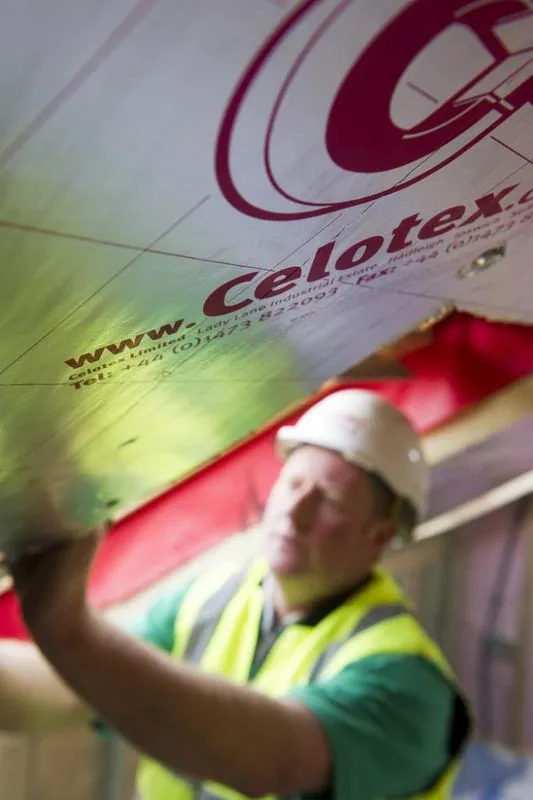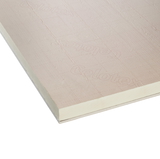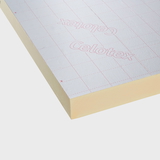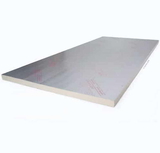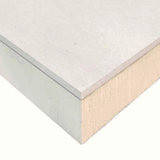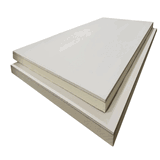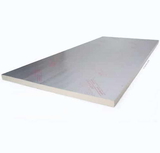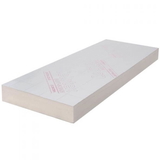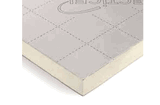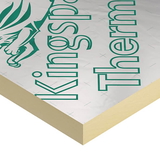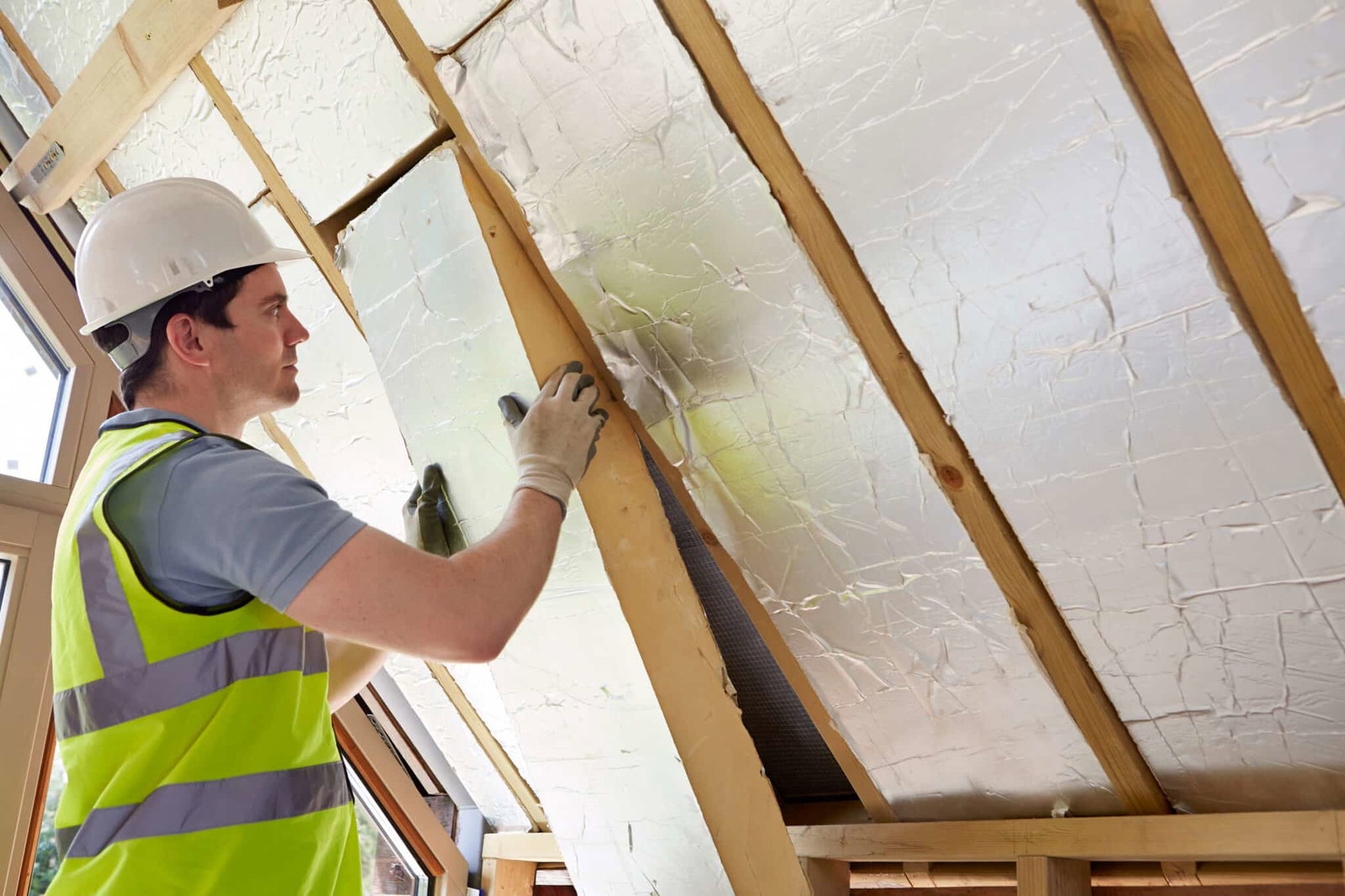- Blogs
- Polyisocyanurate (PIR) Insulation: Advantages, Disadvantages, Materials, Best Practices, and UK Regulations
Polyisocyanurate (PIR) Insulation: Advantages, Disadvantages, Materials, Best Practices, and UK Regulations
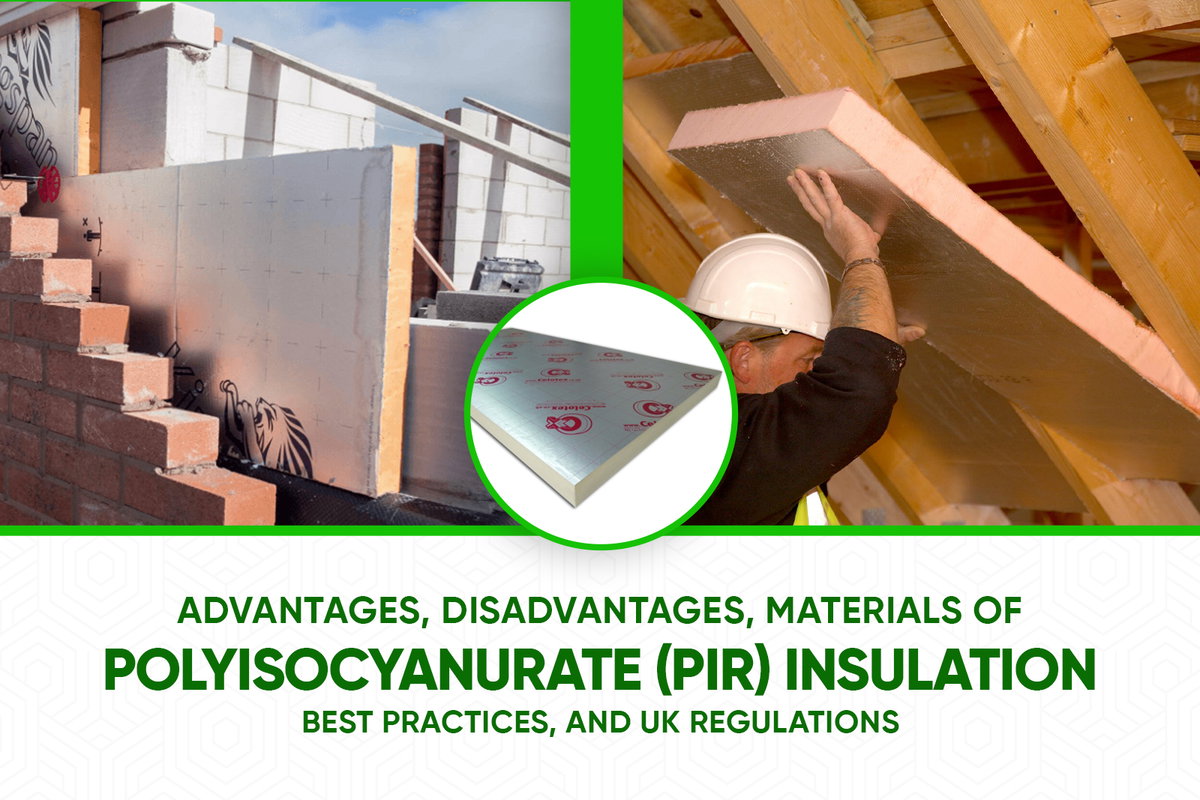
TLDR: Polyisocyanurate (PIR) insulation is a highly thermally efficient, durable, and versatile material widely used in UK construction for walls, roofs, and floors. While offering significant energy savings and fire performance, considerations such as initial cost, installation precision to manage moisture, and compliance with strict UK Building Regulations (including U-values and British Standards) are vital for optimal long-term performance.
Introduction to PIR Polyisocyanurate Insulation
In contemporary construction, insulation plays a pivotal role in achieving energy efficiency, promoting sustainability, and enhancing overall building performance. Among the array of insulation materials available, Polyisocyanurate, commonly known as PIR, has emerged as a prominent choice for builders and specifiers across the United Kingdom. This thermoset plastic foam is widely produced as rigid thermal insulation, distinguishing itself as a polymer-based solution for building envelopes.
PIR is a high-performance material, meticulously created through the reaction of polyols with isocyanates under precise conditions. This manufacturing process yields a product with superior thermal efficiency, remarkable durability, and considerable versatility, making it a cornerstone in modern building practices. It is often considered an advancement from polyurethane (PUR) insulation, reflecting a continuous evolution in insulation technology. This progression towards materials with higher performance within thinner profiles is a notable trend, driven by the increasing need for space-saving solutions and more rigorous energy efficiency targets in construction. This highlights the industry's ongoing innovation in response to evolving regulatory and practical demands.
PIR insulation is a preferred choice in UK building projects for several compelling reasons. Primarily, it substantially reduces energy consumption by effectively maintaining stable indoor temperatures, which translates directly into lower heating and cooling costs for homeowners and businesses. Beyond its thermal capabilities, PIR's rigid structure ensures enduring performance, exhibiting strong resistance to wear, tear, and damage over extended periods. Its adaptability is another key advantage; PIR boards are suitable for a broad spectrum of applications, including walls, roofs, and floors, providing considerable flexibility across residential, commercial, and industrial construction endeavours.
Understanding PIR: Materials and Composition![]()
The effectiveness of PIR insulation stems from its unique chemical composition and manufacturing process. Understanding these elements provides clarity on its performance characteristics.
The Chemical Foundation: Key Raw Materials
PIR foam is created by an exothermic reaction between polyisocyanates and polyols. The primary isocyanate component involved is methylene diphenyl diisocyanate (MDI), selected for its inherent reactivity and thermal stability. Polyols, which can be derived from petroleum or bio-based sources such as rapeseed oil, function as co-reactants in this chemical process. To facilitate the formation of robust isocyanurate ring structures, specific catalysts, including potassium acetate or quaternary ammonium salts, are employed to drive the trimerization reaction. Furthermore, blowing agents, such as water (which generates carbon dioxide) or low-Global Warming Potential (GWP) hydrofluoroolefins (HFOs), are integrated to create the characteristic foam structure of PIR. Notably, the proportion of MDI is higher in PIR formulations compared to polyurethane (PUR), and a polyester-derived polyol is utilised in the reaction, differing from the polyether polyol typically found in PUR.
Manufacturing Process: How PIR Boards are Produced
The synthesis of PIR primarily involves a trimerization reaction where three isocyanate groups cyclise into isocyanurate rings, a process that predominates over urethane formation. This intricate chemical reaction produces a rigid, heat-resistant core material. For the production of insulation boards, the mixed chemicals are precisely deposited onto facers, such as aluminium foil, and subsequently cured within a double-conveyor oven. Throughout this curing stage, temperature sensors meticulously monitor the foam's rise to ensure consistent quality. The resulting isocyanurate polymer possesses a robust molecular structure, attributed to the combination of strong chemical bonds, the inherent ring structure of isocyanurate, and a high cross-link density. These structural attributes collectively contribute to PIR's greater stiffness and enhanced chemical and thermal stability when compared to polyurethanes.
Common Facings and Their Functional Benefits
A typical PIR insulation board often features a lamination of a low-emissivity aluminium foil facing on both sides of its foam core. This foil layer serves a dual purpose: it significantly enhances thermal resistance by reflecting radiant heat back into the building and acts as an effective moisture barrier. Beyond aluminium foil, other common facings can include mineral glass, bitumen, plasterboard, or timber.
The critical role of these facings is evident in their contribution to both thermal performance and moisture resistance. However, it is important to recognise that these facings also represent a potential point of vulnerability. For instance, a damaged foil facing can compromise the thermal conductivity of the board. This highlights the importance of careful handling, storage, and installation of PIR boards to protect these layers. The integrity of the facings is directly linked to the insulation's overall effectiveness, meaning that product specifications and installation guidelines must explicitly address their protection to ensure the material performs as intended throughout its lifespan. This is a critical factor for achieving long-term building performance and energy efficiency.
The complex manufacturing process and specific raw material requirements for PIR directly influence its cost and susceptibility to supply chain disruptions. The production of PIR is more intricate and energy-intensive than that of other insulations, demanding precise conditions and sophisticated technology. This complexity, coupled with raw material supply and transportation challenges, has led to price increases and availability issues for PIR insulation in the UK market. This explains why PIR might have a higher initial cost compared to some other insulation types. For UK builders and specifiers, this implies a need to factor in potential price volatility and availability challenges when planning projects, particularly during periods of global supply chain instability. While its material efficiency, meaning less material is needed for equivalent insulation, helps to offset some of the manufacturing cost, the overall initial expense remains a consideration.
Advantages of PIR Insulation
PIR insulation offers a compelling array of benefits that contribute to its widespread adoption in the construction sector.
Exceptional Thermal Performance and Energy Efficiency
PIR insulation boasts one of the lowest thermal conductivity values available, typically as low as 0.022 W/m·K. This characteristic makes it highly effective at retaining heat during colder months and keeping interiors cool in warmer periods. Its high thermal efficiency means that PIR can achieve the same performance as other insulation materials with a significantly thinner profile, often requiring only half the thickness of typical mineral-based insulation to deliver equivalent thermal performance. This superior thermal efficiency translates directly into substantial savings on energy bills over time.
The exceptional thermal performance of PIR is not merely an energy-saving attribute; it also offers practical advantages for building design and construction. By requiring less thickness for equivalent thermal performance, PIR enables space optimisation, allowing for more usable internal space within buildings. This reduction in material volume can also lead to lighter structures and potentially lower construction costs. This makes PIR particularly appealing in urban environments or renovation projects where maximising internal space is a priority, allowing designers to achieve optimal thermal performance without compromising valuable floor area. This aligns with modern construction trends that favour lightweight and efficient building envelopes.
Durability and Extended Lifespan
The rigid structure of PIR ensures its long-lasting performance, providing robust resistance to wear, tear, and general damage. This material maintains its original shape and insulation properties consistently over many years, with a lifespan that can extend up to 50 years when properly cared for and installed. Furthermore, PIR exhibits excellent dimensional stability, effectively resisting shrinkage and warping over time.
The extended lifespan and consistent performance of PIR insulation effectively justify its potentially higher initial cost, positioning it as a sound long-term investment rather than simply an expense. This perspective is crucial for decision-makers, such as homeowners or developers, who might initially be deterred by upfront costs. Emphasising the "whole-life cost" savings, achieved through reduced energy bills and minimal replacement needs, provides a compelling economic argument for choosing PIR. This also aligns with broader sustainability objectives by reducing the consumption of new materials over the building's lifecycle.
Resistance to Moisture and Prevention of Mould Growth
PIR boards demonstrate strong resistance to water absorption, with a notably low water absorption rate, typically as low as 2% and capped at 5%. This characteristic makes PIR a suitable choice for applications in damp areas. Its closed-cell structure, often complemented by common foil facings, acts as an effective barrier against liquid water and significantly limits vapour permeability. This inherent moisture resistance is instrumental in preventing mould growth, as well as the proliferation of fungi, mosses, and algae, thereby safeguarding against structural damage and extending the overall lifespan of the building.
Fire Performance Characteristics and Safety Aspects![]()
Many PIR boards exhibit good fire resistance, contributing positively to safer construction practices. PIR has the ability to form a char layer when exposed to fire, which effectively slows the spread of flames. This characteristic generally provides better fire resistance compared to other foam insulations like expanded polystyrene (EPS). Fire-rated PIR insulation products are designed to comply with UK safety standards, offering reassurance to builders and occupants. In specific system applications, PIR can achieve favourable Euroclass ratings such as B-s1,d0, although it is important to note that the core material itself is combustible.
Versatility Across Diverse Building Applications
PIR boards are highly versatile, finding application across a wide range of building elements. They are well-suited for insulating walls, including internal, external, and cavity wall constructions. Their use extends to both pitched and flat roof systems, where their compressive strength and moisture resistance contribute to long-term performance in demanding rooftop environments. Additionally, PIR is commonly used for floors, whether suspended or solid, creating a robust thermal layer that reduces energy loss and improves indoor comfort. Beyond structural elements, PIR is also effective for Heating, Ventilation, and Air Conditioning (HVAC) insulation due to its low thermal conductivity and high moisture resistance. The material's adaptability means it can be used with a variety of finishes, further broadening its application scope.
Space-Saving Design
As previously noted, PIR insulation's high thermal efficiency allows it to achieve significant thermal performance with a thinner profile compared to other materials. This characteristic directly translates into more usable space within buildings, particularly in areas like walls and roofs where every millimetre counts. The reduced material thickness also contributes to lighter structural loads and can potentially lead to lower construction costs.
Ease of Handling and Installation
PIR boards are typically lightweight, making them easy to handle and transport on construction sites, which simplifies and accelerates the installation process. They can be readily cut and tailored to specific dimensions and shapes, further aiding efficient fitting during construction.
Disadvantages and Important Considerations for PIR Insulation
While PIR insulation offers numerous advantages, it is important to consider certain drawbacks and factors for its optimal application.
Initial Cost and Manufacturing Complexity
PIR insulation can entail a higher initial cost compared to some alternative insulation materials, such as Expanded Polystyrene (EPS). This higher expense is partly attributed to its complex and energy-intensive production process, which demands precise conditions and sophisticated technology.
Potential for Irritation During Fabrication
During the fabrication process, particularly when cutting PIR insulation boards, the dust produced can act as a mechanical irritant to the skin, eyes, and upper respiratory system. Furthermore, dust generated from plasterboard or plywood facings, if present, may also cause respiratory irritation.
Considerations Regarding Fire Toxicity and Mitigation
Although PIR exhibits commendable fire resistance and forms a protective char layer, its reaction to fire is nuanced. When exposed to high temperatures, PIR insulation boards can release toxic gases, including hydrogen cyanide (HCN) and carbon monoxide. To mitigate this potential hazard, it is crucial that PIR insulation boards are covered by a fire-resistant material, such as plasterboard or metal cladding. Depending on specific product data and system performance, the use of PIR may be subject to restrictions in certain high-rise building applications. This aspect means that simply stating "fire resistance" for PIR is insufficient for specifiers. A deeper understanding of its reaction to fire, including smoke and toxicity, is critical for compliance with fire safety regulations, such as Approved Document B, and for ensuring occupant safety. This underscores that insulation choice is not solely about thermal performance but requires a holistic assessment of building safety.
Vulnerability to UV Radiation and Prolonged Moisture Exposure
PIR insulation boards are susceptible to damage from direct sunlight and UV radiation, necessitating appropriate protection and covering to shield them from sun exposure. Despite its high water resistance, PIR is not entirely waterproof. Prolonged exposure to excessive moisture or submersion can lead to water uptake and degradation, which in turn can diminish its thermal performance and structural integrity. Improper installation or extended exposure without adequate ventilation may also compromise its performance over time.
Condensation Risk and the Need for Airtightness ![]()
PIR insulation, particularly when foil-faced, possesses very low vapour permeability, effectively acting as a vapour barrier. This characteristic, while beneficial for moisture resistance, means that careful consideration must be given to the risk of condensation. If warm, moist indoor air bypasses or penetrates the PIR layer and subsequently encounters a cold surface, interstitial condensation can occur, potentially leading to mould growth. Therefore, meticulous sealing of joints, often achieved with foil tape, is crucial to ensure vapour tightness. Furthermore, effective moisture management within the overall construction design, potentially incorporating specific ventilation strategies, is paramount. For instance, Scotland-specific research advises that PIR should only be used if a comprehensive condensation analysis confirms its suitability for the particular application. This distinction is critical for installers and designers. It means that relying solely on the material's inherent resistance is insufficient; proper detailing, sealing of joints, ventilation, and potentially a condensation analysis are paramount to ensure PIR performs optimally and avoids issues like mould or structural damage. This shifts the focus from a material property to the quality of the system design and installation.
Supply Chain and Market Availability Factors
The UK market has experienced price increases and availability challenges for PIR insulation, linked to the supply of raw materials and issues with their transportation. This can impact project planning and material procurement.
Limitations for Non-Standard Shapes
PIR is typically supplied in rigid board form, making it most suitable for insulating flat surfaces. It is generally not ideal for applications involving awkward or curved shapes.
Best Practices for PIR Insulation Installation
Achieving the full benefits of PIR insulation hinges on meticulous installation practices. Adherence to best practices ensures optimal performance, durability, and safety.
Essential Pre-Installation Preparation and Safety Measures
Before commencing any installation, it is crucial to assess the moisture levels within the building. Installing PIR boards in a moist environment can lead to mould, dampness, and potential structural damage. The work area should be thoroughly cleared of all obstacles and debris to ensure a safe environment. Installers must use appropriate personal protective equipment (PPE), including gloves, eye protection (with UV glasses recommended for working with aluminium or mineral glass faced products in bright sunlight), and respiratory masks, particularly when cutting the boards. It is also essential to ensure that the PIR boards are firmly supported and stable during cutting to prevent unexpected movement that could lead to injury or inaccuracies.
Beyond the material's inherent properties, the physical act of working with PIR insulation presents specific health and safety considerations for installers, necessitating appropriate protective measures and tools. This underscores the responsibility of employers and installers to provide adequate PPE and training, which also influences the design of cutting tools and working environments.
Accurate Measuring and Cutting Techniques
PIR insulation boards are commonly supplied in standard sizes, often requiring precise cutting to fit specific dimensions of the installation area. For accurate cutting, a fine-toothed saw or a sharp utility knife should be used in conjunction with a straight-edge ruler and a measuring tape. Measurements and markings must be carried out with extreme care, double-checking all dimensions to minimise waste and ensure accuracy. The 'score and snap' technique can be employed for efficient cutting. Once cut, any rough edges can be smoothed with a small knife or sandpaper to ensure an accurate fit between boards and minimise gaps. To reduce dust generation during cutting, it is advisable to use a trimming knife rather than a saw. In confined spaces, the use of extraction systems is recommended when mechanical cutting is performed.
Secure Fixing Methods for Various Applications
For optimal thermal performance, PIR boards must be installed tightly butted together, ensuring no gaps exist between joints to prevent thermal bridging and heat loss. Common methods for securing PIR insulation include adhesive bonding, mechanical fixings, or a combination of both. When applying to solid walls, a continuous band of adhesive should be applied around the perimeter, along with a dot-and-dab pattern across the rest of the wall. These dabs should be approximately 10-25mm thick, 50-75mm wide, and 150mm long, applied in three vertical rows per board. A 15mm gap should be maintained at the bottom of the boards on solid walls, using temporary supports during installation. For cavity wall applications, the insulation thickness should precisely match the cavity depth to ensure a flush fit without protrusions. When insulating timber frame walls, boards should be fitted snugly into the cavities, with careful cutting around obstacles.
Implementing Vapour Barriers and Effective Air Sealing
PIR insulation, particularly its foil-faced variants, functions as a vapour barrier, which necessitates careful consideration of condensation risk within the building envelope. To prevent moisture from reaching cold surfaces and causing damage, a vapour barrier should be positioned on the warm side of the insulation. Meticulous sealing of all joints, typically with foil tape, and sealing around penetrations is crucial to ensure vapour tightness and prevent air leakage, which would otherwise compromise the insulation's thermal performance.
Proper Storage and Handling Guidelines
To preserve the integrity and performance of PIR products, they should be stored off the ground, on a clean, flat surface, and under cover. The storage location must be free from ignition hazards and any form of direct radiant heat. It is important to note that the polythene wrapping provided is not considered adequate protection for outdoor storage. Additionally, installers should be aware that foil-faced products can become slippery underfoot when wet.
Maintenance and Ensuring Long-Term Performance
With proper care and installation, PIR insulation can deliver effective performance for up to 50 years. To ensure this longevity, regular visual inspections are recommended. These can be conducted annually for high-risk systems or every 15-20 years for general assessment, to identify any signs of damage, compression, or moisture intrusion. Prompt repairs are essential; small holes should be patched, gaps sealed with caulk or foam, compromised sections replaced, and joints re-taped without delay. Maintaining proper documentation of all inspections and repairs is also a key practice for long-term management.
The theoretical benefits and durability of PIR insulation are highly dependent on the quality and precision of its installation. Poor installation can negate its advantages and lead to significant long-term problems. This implies that the initial investment in PIR should be matched by an investment in skilled labour and strict adherence to best practices. For property owners and developers, this means selecting experienced installers and ensuring robust quality control during the construction phase. It also highlights that the "product" is not just the board itself, but the installed "system," where every detail of sealing, ventilation, and protection contributes to its overall effectiveness and lifespan.
UK Standards and Regulations for PIR Insulation ![]()
Compliance with UK standards and regulations is paramount for the effective and lawful use of PIR insulation in construction projects.
Overview of UK Building Regulations
The UK building regulations underwent significant updates in 2022, introducing new benchmarks for the thermal performance of buildings. These revisions are specifically aimed at improving energy efficiency and reducing carbon emissions, marking a crucial step towards a more sustainable built environment. Approved Document L (Conservation of Fuel and Power) provides the technical guidance necessary for meeting the energy efficiency requirements outlined in Part L of the Building Regulations 2010 for building work carried out in England. Similarly, Approved Document B (Fire Safety) offers guidance specifically for the use of PIR insulation in flat roofing applications, detailing its thermal, strength, and fire properties.
The regulatory requirements vary considerably depending on the nature of the building work, distinguishing between new or replacement thermal elements, renovated elements, extensions, or changes of use. A key objective of the 2022 updates is for all new homes to achieve a 31% reduction in operational CO2 emissions compared to the standards set by Part L 2013. Building assessments are now conducted using the latest version of the Standard Assessment Procedure (SAP 10.2) software, necessitating the submission of both Design stage and As-built BREL (Buildings Regulations England Part L) reports to demonstrate compliance.
The active evolution of UK regulations indicates a clear drive to push the construction industry towards significantly higher standards of energy efficiency and environmental performance. This means that merely meeting minimum requirements might not be sufficient for future-proofing buildings. Specifiers and builders should consider designs and materials that exceed current minimums, such as high-performance PIR, to anticipate future regulatory tightening and align with broader sustainability objectives, thereby reducing long-term operational costs and carbon footprint.
Key U-Value Requirements for New Builds, Renovations, and Existing Elements
U-values are a fundamental metric in UK building regulations, measuring the rate of heat loss through a building's thermal elements, such as walls, roofs, and floors. These values are expressed in watts per square metre Kelvin (W/m²K), with lower U-values indicating superior heat retention. U-value calculations are indispensable for assessing insulation effectiveness and ensuring regulatory compliance. The required thickness of insulation, including PIR, will vary to achieve the specified U-values, with PIR generally requiring less thickness than materials like EPS or Rockwool for equivalent thermal performance.
The table below summarises the key U-value targets mandated by UK Building Regulations for different building elements and project types:
Element Type |
New Builds (Current Regulations) |
Renovations / New Elements in Existing Dwellings |
Existing Elements (Limiting U-values) |
| Roofs | 0.11 W/m²K | 0.15 W/m²K | 0.16 W/m²K |
| Walls | 0.18 W/m²K | 0.18 W/m²K | 0.30 W/m²K |
| Floors | 0.13 W/m²K | 0.18 W/m²K | 0.25 W/m²K |
Note: For new or replacement thermal elements, area-weighted average maximum U-values are also specified (e.g., Walls: 0.18 W/m²K, Floors: 0.18 W/m²K, Roof: 0.15 W/m²K for pitched, 0.18 W/m²K for flat), with limiting U-values for compensation (0.70 W/m²K for walls and floors, 0.35 W/m²K for roofs).
Relevant British Standards
British Standards (BS), developed by the British Standards Institution (BSI), provide comprehensive guidelines and specifications to ensure safety, reliability, and quality across various industries, including construction. Adherence to these standards is essential for meeting the broader building regulations.
Several key British Standards are particularly relevant to PIR insulation:
BS EN 13165: Rigid Polyurethane (PUR) and Polyisocyanurate (PIR) Foam Products: This specific standard outlines the requirements for thermal performance, dimensional stability, and fire resistance for PIR foam products.
BS 5250: Code of Practice for Control of Condensation: This standard offers guidance on design and construction measures necessary to control condensation in buildings. It details best practices for moisture management, which is crucial for insulation installations to prevent dampness and mould growth.
BS 476 Series: This series of standards describes various fire tests for building materials, including insulation. It assesses the fire resistance and reaction to fire of insulation products, ensuring they provide adequate protection and do not contribute to the spread of fire.
BS EN ISO 6946: Building Components and Building Elements – Thermal Resistance and Thermal Transmittance: This standard specifies the calculation methods for determining the thermal resistance and thermal transmittance (U-value) of building elements, encompassing walls, roofs, and insulation-covered floors.
The Significance of BBA Certification and UKCA Marking
BBA (British Board of Agrément) Certification: The BBA is an independent, non-profit UK certification body responsible for assessing building products for their defined applications and compliance with relevant Building Regulations. BBA certificates are widely recognised within the industry as credible proof that certified products have undergone rigorous assessments, including both laboratory analyses and on-site testing to determine their performance under extreme conditions. Many PIR products, including those from manufacturers like Celotex, hold BBA certification, validating their suitability for various applications.
UKCA Marking: For construction products placed on the GB (Great Britain) market that are covered by a designated standard or conform to a UK technical assessment (UKTA), it is mandatory for manufacturers to prepare a declaration of performance and apply the UKCA mark. The UKCA mark serves as a key indicator of a product's compliance with GB legislation, with the manufacturer declaring conformity to all legal requirements necessary to achieve this marking.
Compliance in UK construction is a multi-layered process, where material-specific standards, performance calculation methods, and overarching building regulations are intricately linked and validated by third-party certification. This highlights that selecting PIR insulation involves more than simply choosing a board; it requires a comprehensive understanding of how the material, its installation, and the overall building design interact to meet a complex web of legal and performance requirements. For professionals, this necessitates a holistic approach to specification, ensuring not just product quality but also system design and adherence to installation best practices are compliant and certified.
Conclusion
PIR insulation stands as a high-performance material, offering exceptional thermal efficiency, durability, and versatility that are vital for modern UK construction. Its capacity to provide significant thermal resistance within a minimal thickness makes it a valuable solution for optimising space and achieving the increasingly stringent energy efficiency targets in UK buildings. While considerations such as its initial cost, the precision required during installation, and specific fire and moisture management strategies are important, PIR's long-term benefits in terms of energy savings and extended lifespan often provide a compelling justification for the investment.
Crucially, adherence to UK Building Regulations, relevant British Standards, and obtaining appropriate certifications such as BBA and UKCA marking are essential for ensuring the compliant and effective use of PIR in diverse construction projects. As the UK continues its drive towards enhanced energy efficiency and reduced carbon emissions, PIR insulation remains a key material for creating built environments that are comfortable, cost-effective, and sustainable for the future.
Legal Disclaimer
This article provides general information about Polyisocyanurate (PIR) insulation for educational purposes only. While every effort has been made to ensure accuracy, the content should not be considered professional advice or used for specifying materials in any construction project. Building regulations, standards, and best practices are subject to change and vary based on specific project requirements and local authority interpretations. Always consult with qualified architects, structural engineers, building control officers, and relevant industry professionals before making any decisions regarding material selection, design, or installation. This content does not constitute a recommendation or endorsement of any specific product or application. All advice should be thoroughly checked, and this content should not be used to specify materials

Samuel Hitch
Managing Director
Buy Insulation Online.
Leave A Reply
Your feedback is greatly appreciated, please comment on our content below. Your email address will not be published. Required fields are marked *



